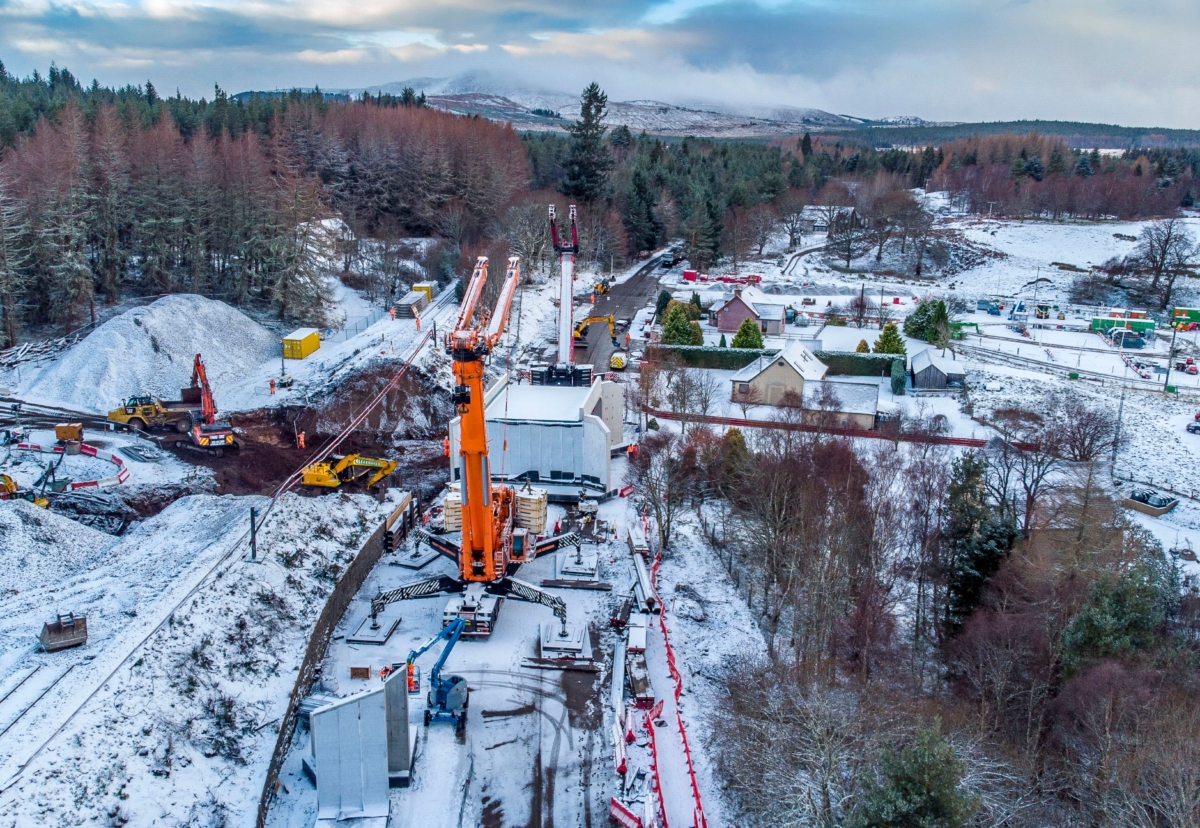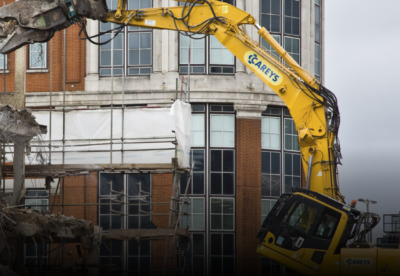The work was part of supporting work ahead of the dualling of the A9 between Tomatin and Moy.
In continuous working across 78 hours from last Friday night until Tuesday morning, the 1884 Victorian masonry structure was demolished and replaced with a 660 ton twin-track concrete box structure.
The construction team overseen by the BAM Nuttall, Atkins WSP Joint Venture used a Self-Propelled Modular Transporter (SPMT) system to carry the structure from the site compound, where it was constructed offline over a 10-week period, before manoeuvring the massive 660-ton structure several hundred meters along the B1954 and sliding it to its final position.
Two 750-ton cranes then lifted seven concrete wingwalls, which were also constructed on site, into position before the railway was fully reinstated and checked ahead of re-opening to traffic early on Tuesday morning.
The new bridge will strengthen, safeguard, and futureproof the route for the long-term including dealing with the weight and volume of traffic which passes over it on a daily basis and accommodating any potential future double-tracking of the line.
During the same 78-hour possession, a 1200x800mm pre-cast box culvert and a 900mm twin wall plastic culvert under the track were also installed at two locations to accommodate the forthcoming A9 works.
Billy McKay, Network Rail’s Programme Manager for the Lynebeg bridge replacement works, said: “We are delighted that the work to replace the bridge at Lynebeg was completed successfully and the railway re-opened to traffic as planned – despite terrible weather conditions and the impact of Storm Arwen.
“The installation was complex due to requirement to remove the existing railway infrastructure including cabling, track and the embankment, before the concrete bridge could be pushed into its final position. And all against the clock due to the need to reinstate and re-open the line to traffic at the end of the possession
“As well as upgrading the railway bridge, the team is delighted to have played a part in supporting the future dualling of the A9“.
Works will continue on site for several weeks to complete the new structure, including cladding the concrete wing walls with the recovered stone from the original stone arch bridge which was constructed as part of the Highland Mainline in 1884.

.gif)






















.gif)

























 (300 x 250 px).jpg)


